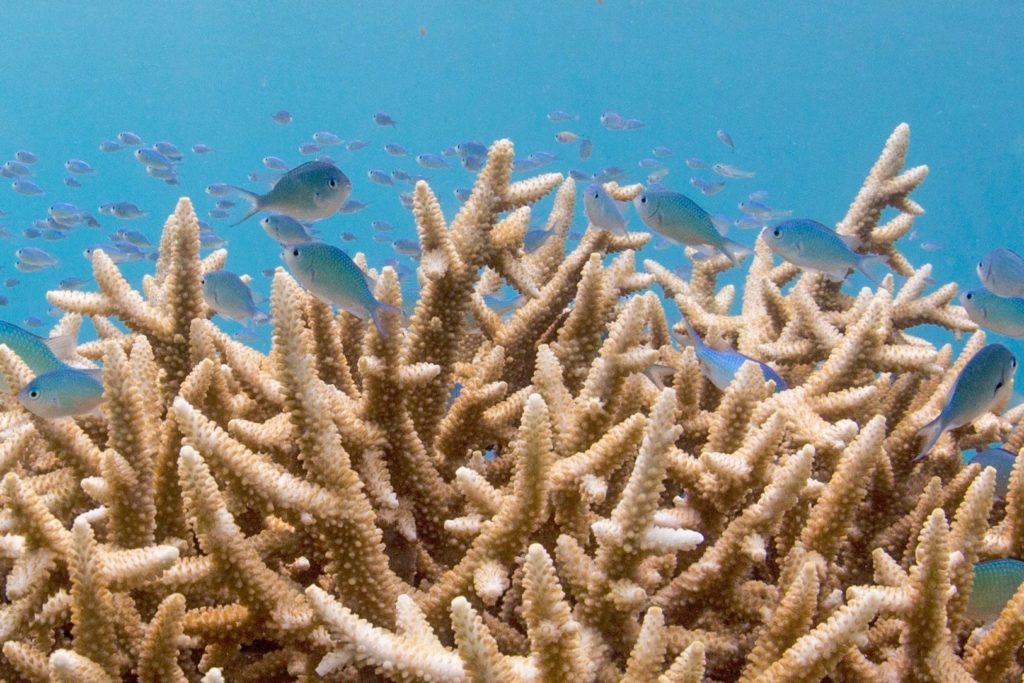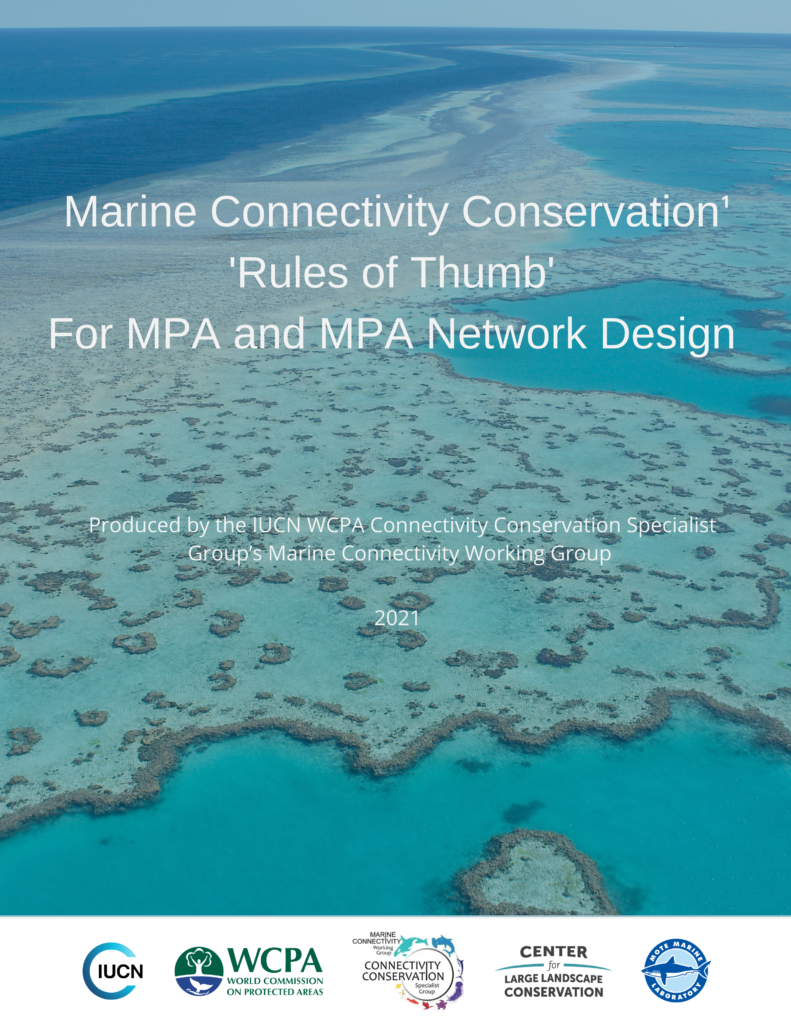The ecological connectivity of marine and coastal ecosystems is essential. It requires linkages that connect our oceans’ critical habitats, species, and natural processes. These connections allow a variety of species to move and they also sustain important ecosystem functions such as fish larvae dispersal, nutrient cycling, and carbon sequestration—the ocean’s ability to capture carbon dioxide from the atmosphere to slow climate change. To inform conservation efforts that maintain, enhance, and restore ecological connectivity of the oceans, a new publication was released today titled “Marine Connectivity Conservation ‘Rules of Thumb’ for MPA and MPA Network Design.”
Produced by the IUCN WCPA Connectivity Conservation Specialist Group’s Marine Connectivity Working Group (MCWG), this report provides the first-ever guidance on connectivity for MPA (Marine Protected Area) managers. It details 13 ‘Rules of Thumb’ for better integrating connectivity into designing and managing conservation activities—from the interactions of organisms in the shallowest of tidepools, to resources in the deepest reaches of the seabed, and the movement of currents and migratory species around the world. This publication arrives just as the latest report from the Intergovernmental Panel on Climate Change (IPCC) highlights that ocean warming, acidification, and reduced oxygen levels are affecting marine and coastal ecosystems and the people that rely on them for their health and livelihoods.
In the face of unprecedented biodiversity loss and climate change, the Center for Large Landscape Conservation is proud to support MCWG’s work. This support includes operating its network of experts and supporting activities to fulfill its mission to protect the long-term ecological integrity of marine protected areas, marine ecosystems, and other biodiversity-rich marine areas, including Key Biodiversity Areas and World Heritage Sites.




